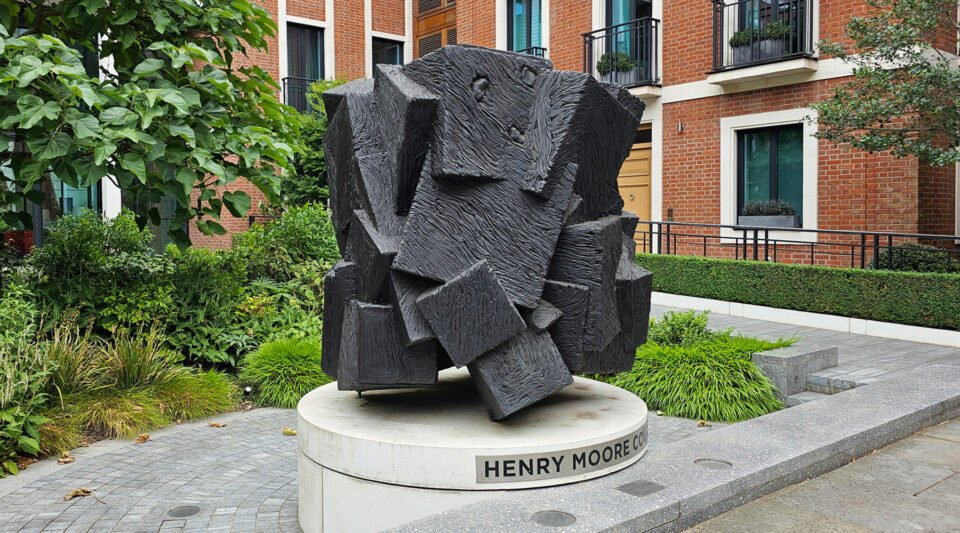Walking down a Chelsea street and I spied a lump of art, and a sign at the bottom with the magic name of Henry Moore. Blimey, I didn’t know he made that sort of art, so let’s take a closer look.
And it’s not what I expected.
Although the plinth seemed to say Henry Moore, if you walk around a bit, another word appears, and it turns out that the artwork is in front of a block of posh flats called Henry Moore Court.
To explain, this block of posh flats used to be the site of the Chelsea College of Arts, which opened in 1895 on Manresa Road. In the 1960s they built a modern block for students as well as a hall of residence, and a fire station (not just for the students). The modern building was designed by the LCC Job Architects of Ronald Robson-Smith and Austin Winkley, and later Michael Booth.
The New Chelsea was a modernist building in the International Style, described as ‘spartan’, if with impact, by the Architect & Building News (1965), and ‘chunky’ by Interbuild (1965). It was particularly notable for the double-height rooms and expansive use of glass.
One of the college’s previous teachers was also a sculptor and decided to sell one of his pieces to decorate the front. That teacher was Henry Moore, and he offered them Two Piece Reclining Figure No.1.
Following changes in the college, the “new” building was demolished in autumn 2010, and the current block was erected on its site.
Henry Moore’s sculpture was moved to the college’s current site right next to Tate Britain, and the new block of flats was named Henry Moore Court to try to absorb some of the glitter from the sculptor’s name.
And they commissioned a replacement work of art where Henry Moore’s piece once stood – and that’s the somewhat cuboid brutalist block that’s there today.
It’s by Andrew Sabin and is titled “Painting and Sculpture” Just like his predecessor, Andrew Sabin was also a student and teacher at the college.
The bronze sculpture was cast by the Bronze Foundry in Powys and installed by them in 2013.
It has an interesting design, appearing to be both solid blocks and sculpted ones that are slightly crushed. In a way, it reminded me of the Spearmint Chews that you can still pick up in vintage sweet shops, which were chewy cubes you couldn’t help but squash a bit before popping into the mouth.
Of course, they were white, and this is black.
That also makes it stand out a bit from the surrounding buildings, which is nice, and it sits in a small recessed space with steps down and some lighting at night.
It also serves a function, as the plinth it’s on is the Dry Riser Inlet – essentially the point where firefighters will plug their hoses into to pump water into the building’s firefighting pipes if they need to extinguish a fire inside the building.
Just don’t assume it’s an unusual Henry Moore sculpture when approaching it from the north side.




